How to get rid of bed bugs UK
While bed bugs can live anywhere, they’re most likely to spend time in your bed where they’re close to their food source (that’s you).
They can hide in various spots, though, so if you suspect a bed bug infestation, you’ll want to treat everything in and around your bed.
Even though bed bugs are notoriously difficult to get rid of, there are a number of bed bug treatments you can rely on.
These include:
- Cleaning clothing and linen: Applying extreme heat or low temperatures to linen and clothing can kill bed bugs.
- Heat treatments: This includes steam cleaning and dry steaming mattresses, sofas, and other furniture items.
- Natural and DIY treatments: Natural insecticides and essential oils, particularly tea tree, can kill bed bugs.
- Chemical disinfection: These can be quite toxic but will be the most effective if you have a significant bed bug infestation.
Let’s look at some of these steps in a tad more detail.
Disinfecting bedding and clothing
Treating your bedding and clothing is probably the easiest if you’re suspecting bed bugs, and there are a number of things you could do. 💦
- Wash your bedding and clothes at a high temperature - a hot wash at 60℃ will suffice to kill any critters.
- Tumble dry your bedding and clothes on a hot setting for about 30 - 60 minutes.
- Iron everything at a high temperature.
You can also freeze your laundry by placing it into your freezer for at least three to four days - this will kill off any bed bugs. 🥶

Heat treatments
You can use a steam cleaner on furniture, your bed frame and headboard, and the mattress where you suspect a bed bug infestation.
The high temperature of the steam can kill both adult bed bugs, larvae, and eggs.
But bed bugs will only die if their body temperatures reach 45℃, so heat treatments must be well above this.

You can also place luggage or smaller items in black plastic bags into the sun if outside temperatures are high enough. ☀️
Natural treatments
The best-known natural treatment is something called diatomaceous earth [2] (easily available on Amazon), which is basically a naturally occurring soft, sedimentary rock that can be crumbled into a fine powder. 🪨
Put this powder in the corners of your room, around furniture, into the seams of the mattress, and all over your bed frame.
Diatomaceous earth contains silica, a mineral that dehydrates bed bugs and can thus kill them.
Don't worry; diatomaceous earth is considered non-toxic to humans and pets [3], but you can also buy food-grade options to be extra safe, and it's best to avoid inhaling the powder as it can irritate your lungs.
You can also make a bed bug trap using diatomaceous earth:
- Wrap adhesive tape around the legs of your bed and place small cups of diatomaceous earth underneath.
- This will allow you to catch bed bugs every time they try to get in and out of your bed.
- Of course, this won’t help if the bed bugs are living comfortably in your mattress already.
Once the bed bugs are dead, vacuum them up.
Throw away the vacuum cleaner bag immediately to prevent any possible survivors from proliferating - and wrap it in plastic so they don’t spread.

You can also mix tea tree, lavender, or peppermint essential oils with water and spray them on areas where bed bugs are (or might be) present. 🪻
Chemical treatments
Unfortunately, if the problem persists, you will have to get professional help. 🧪
If you suspect quite a pronounced infestation, it also makes sense to rely on pest control as a first point of call to prevent the problem from getting any worse.
You can contact your local council [4], who may be able to help and treat your home for free.
Or, contact a legitimate pest control company that’s part of the British Pest Control Association [5].
Depending on the severity of the problem and the methods used, you may need to temporarily vacate your home while pest control is in action - but they'll be able to advise you on your specific situation.
How to prevent getting bed bugs
Bed bugs aren’t usually related to bad hygiene, but thorough deep cleans can help prevent a bed bug infestation.

Here are a few tips and tricks to prevent a bed bug infestation.
Reduce the number of places bed bugs can hide
As a first step, it makes sense to reduce the number of places bed bugs can hide.
You can:
- Get rid of clutter, particularly around your bed.
- Vacuum often, particularly under, behind, and around your bed.
- Tighten loose electrical faceplates (bed bugs can hide in these) and remove or repair loose wallpaper.
- Seal cracks and crevices in bed frames, walls, floor boards, and skirting boards.
By cleaning up clutter, vacuuming, and sealing, you reduce the number of hiding places bed bugs can take up residence in. 🧹
Check everything that enters your home
Bed bugs won’t randomly appear - they have to be carried into your home.
This means one of the first steps to avoid a bed bug infestation is checking everything that enters your home for bed bugs - check out our section further down on recognising bed bugs.
- Check every item of furniture, regardless of whether it’s new or second-hand furniture, that you bring into your home.
- Don’t take mattresses or sofas from the pavement - you don’t know why these were thrown out, and they could harbour a bed bug infestation.
- Check your luggage and clothing if you’re coming from a bed bug area before you enter your home.
By checking everything that enters your home, you can prevent a bed bug infestation before it starts. ⌚️
Regularly wash and heat-dry your bedding and clothing
You should regularly wash and heat-dry your bed sheets, duvet covers, blankets, and any clothing that touches the floor or your bed.
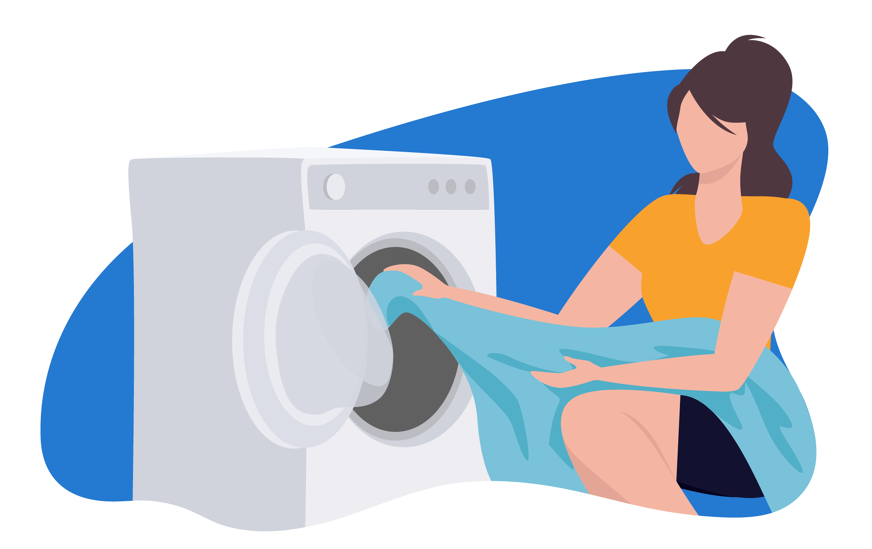
Bed bugs and their eggs can also hide in laundry containers, so remember to clean these as well.
Heat treatments are effective in killing bed bugs and their eggs, so you can stop an infestation in its tracks.
Regularly clean and air out your mattress
You should clean your mattress about once a quarter - this is the key to making it last longer, but it’s also a good time to check for bed bugs.
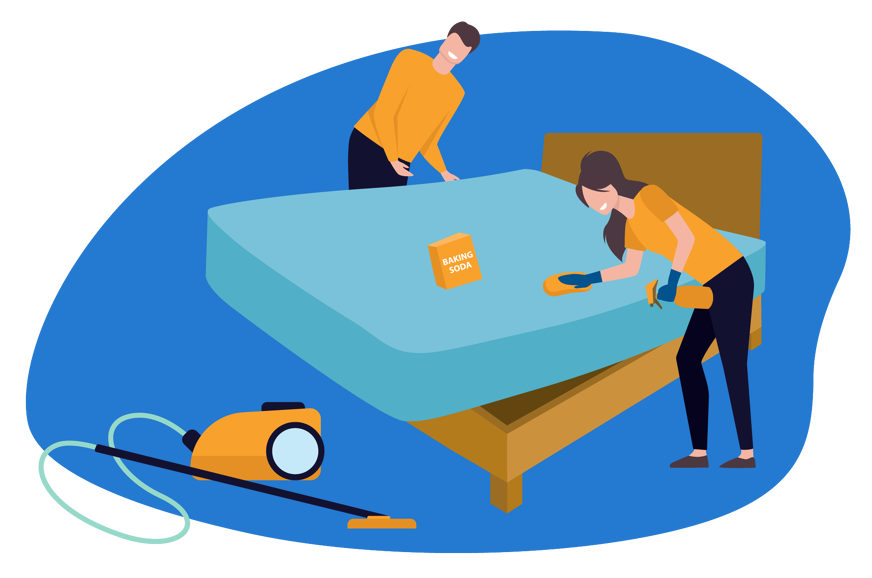
You can vacuum pocket-sprung mattresses safely, but foam mattresses may require some sweeping to avoid damage.
Bed bugs also like dark and cosy spaces, so remove your bedding once a week (when you should pop it in the wash anyway) and let your mattress air out.
This helps any excess moisture evaporate and creates a more hygienic environment.
Unfortunately, standard mattress protectors won't fully guard against bed bugs, even if they have a plastic film.
Vacuum well
Carefully vacuum carpets, floors, any upholstered furniture, bed frames, and under and around your bed.

This will ensure that if there are any bed bugs, they’ll be vacuumed up immediately.
Throw out the used vacuum bag by placing it into a tightly sealed plastic bag after each use to prevent bed bugs from escaping.
Keep your bedroom cool
Bed bugs thrive in temperatures between 21 and 32℃, so keeping your bedroom cooler than this - especially at night - can help. 🧊
How to tell if you have bed bugs in your bed
There are some tell-tale signs of bed bugs that may indicate an infestation.
Brownish stains on your bed linen or mattress
Inspect your linen (sheets and pillowcases), sleep accessories, and your mattress, particularly in the mattress seams, and look for bed bugs themselves or small brownish-red stains. 🪳
These brown spots can be a mix of bed bug faeces, blood stains, or squashed bed bugs if you lay on them during the night.
You should do a very thorough inspection for this, so remember to examine all creases, tufts, and piping along your mattress.
You may need something like a credit card to scrape along the mattress seams or other crevices for a closer inspection.
Also, look closely under the corners of the mattress and all crevices in your bed frame.
Bed bug bites
Another telltale sign that you may have bed bugs living with you are bites on your skin, particularly on your arms and legs.
Bed bug bites are often quite itchy and usually appear as raised bumps in a line, zigzag, or a random pattern.

Bites can sometimes take a few days to appear, and not everyone is sensitive to them, so this isn’t always a reliable indicator.
How do you treat bed bug bites?
Bed bug bites are itchy and uncomfortable, but they’re typically not dangerous.
They should clear up within about a week, but you can take some extra precautions:
- Keep the affected area clean
- Avoid scratching the bites
- Put something cool, like a damp cloth, on the area
- Take antihistamines if the bites are quite itchy
- Use an over-the-counter steroid cream, like hydrocortisone, to help them heal faster
A severe allergic reaction is possible, but this is quite rare.
If the bites remain swollen, itchy, or painful, even after over-the-counter treatments, or if the pain and swelling is spreading, please see your GP or check the NHS [6] for more information.
What are bed bugs?
The common bed bug [7] (cimex lectularius) is an oval-shaped insect about the size of an apple seed (5 mm in length) and reddish-brown in colour.
Unlike dust mites and much like lice, bed bugs are visible to the naked eye and you’ll be able to spot them by doing a thorough inspection.

They do like to play hide and seek, though, and you’re most likely to find them tucked away in different spots like your bed frame, the sofa, in wooden furniture, between floorboards, and even in electrical outlets and on your mattress.
They will always favour places where they can feed - i.e. where you like to spend time.
That’s why they’re so common in beds since it gives them plenty of uninterrupted feeding time while you’re snoozing away. 💤
The lifespan of a bed bug is approximately six months, but they can lay dormant for up to a year.
Bed bugs lay eggs, which hatch approximately every 14 days, and they multiply quickly - a single female bed bug can end up causing an infestation of around 5000 bed bugs within 6 months.
Can you get rid of bed bugs on your own?
While bed bugs are nasty and terrifying, the important thing is not to panic if you suspect a bed bug infestation.
If you spot anything out of the ordinary, spring into action immediately by taking a few of the washing and cleaning steps and trying home remedies.
But if you’re already spotting a larger bed bug infestation, don’t waste any time and contact your local council or pest control service as soon as possible to prevent the problem from getting worse. ☎️
Having bed bugs doesn’t mean you or your home are dirty - it simply means you’ve had a bout of bad luck.
A bed bug problem is nothing to be embarrassed about.


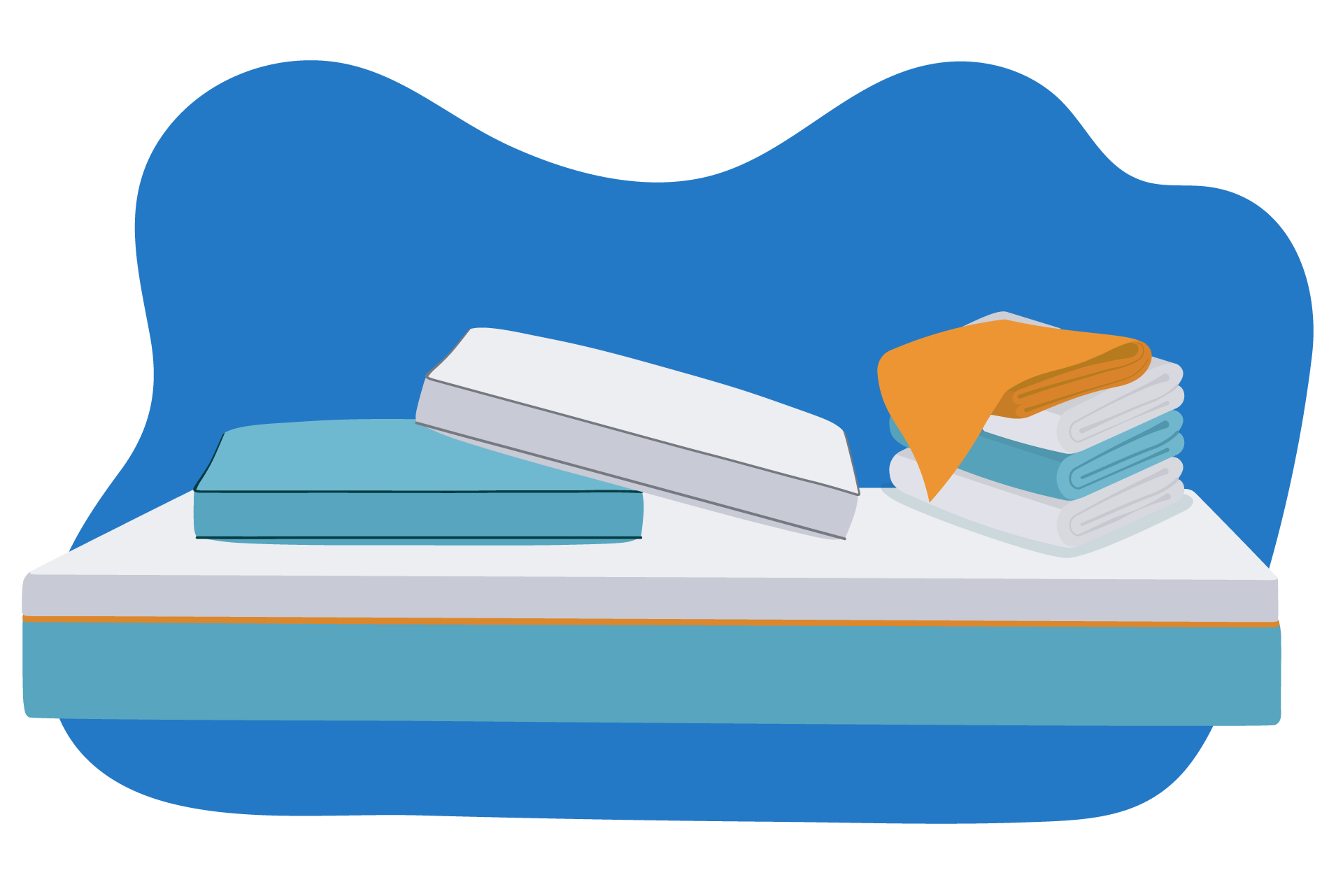




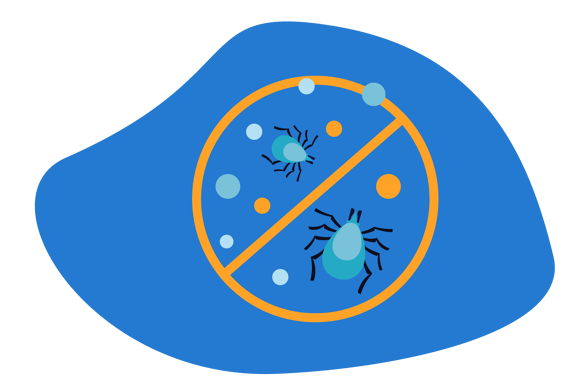
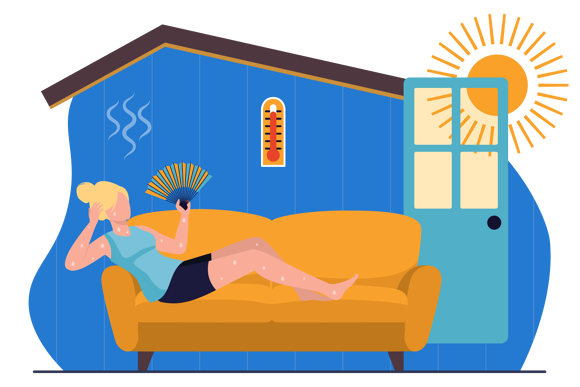



Alternatively, message us directly via the Contact Us page.